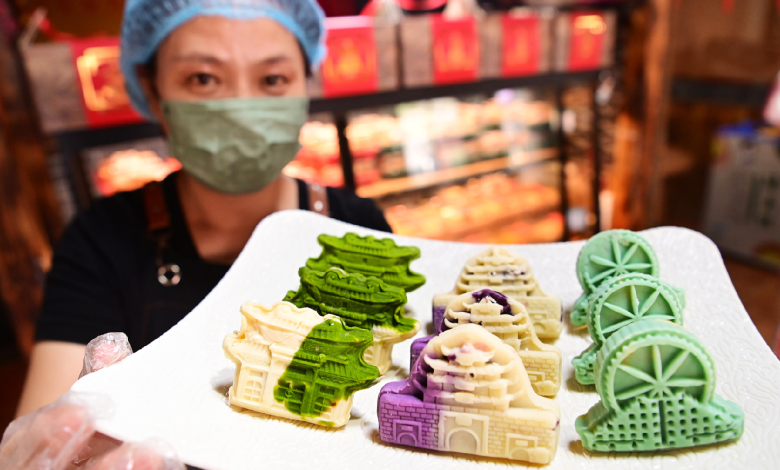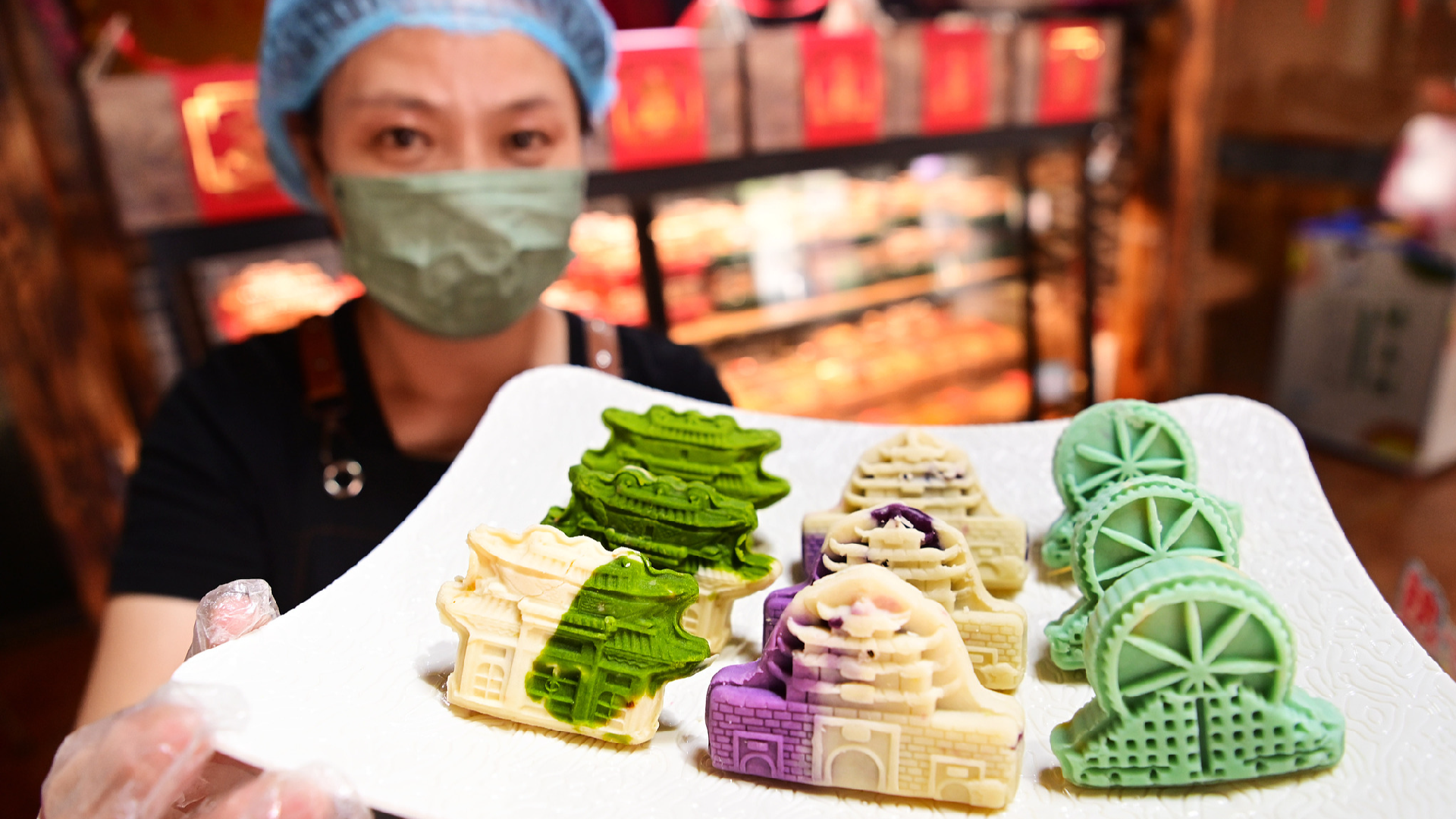Mooncakes redefined: A modern take on a traditional pastry


<img src='https://news.cgtn.com/news/2024-09-15/Mooncakes-redefined-A-modern-take-on-a-traditional-pastry-1wV0xQLKLRK/img/a357eab657a242a3bca71d5d29a29793/a357eab657a242a3bca71d5d29a29793.jpeg' alt='Various mooncake gift boxes displayed in a mall in Shanghai, China, August 31, 2024. /CFP'
The mooncake is a delicious pastry with varying fillings traditionally given as a gift during the Mid-Autumn Festival, one of the most important holidays in Chinese culture, which falls on September 17 this year.
Yet the modern mooncake has acquired significance beyond what this pastry could hope for, and has arguably become, in these fast-moving times, both a cultural symbol and a beloved product in the consumer market.
According to data from the China Association of Bakery & Confectionery Industry, China produced 320,000 tonnes of mooncakes in 2023, generating sales of 22 billion yuan.
Packaging slims down
Data from the China Association of Bakery & Confectionery Industry indicates that the largest share of mooncake gift boxes produced this year fell within the price range of 70 to 220 yuan, which is also the most popular consumer bracket. Mooncake gift boxes priced above 500 yuan have largely disappeared from the regular market.
China has been strengthening its monitoring of overpriced mooncakes for years to curb waste and promote the healthy development of the industry.
The National Development and Reform Commission and three other government organs issued a notice in June 2021, stating that mooncakes should not be wrapped in precious metals, rosewood or other expensive materials, and should not be sold in boxes pre-packed with other consumer goods.
These standards place limits on the cost of packaging for high-priced mooncakes, discouraging companies from excessive spending on packaging and making mooncakes more reasonably priced. This ensures consumers can purchase higher-value products at a better price.
Zhu Danpeng, a Chinese food industry analyst, highlighted that this year’s mooncake market has seen significant progress in reducing packaging weight, while consumers have also become more rational in their purchases. He noted that the sales cycle for mooncakes has shortened this year, reflecting this shift in consumer behavior.
Zhu also pointed out that there have been notable changes in packaging, with designs now simpler and more minimalist, aligning with the national regulations against excessive packaging for mooncakes.
<img src='https://news.cgtn.com/news/2024-09-15/Mooncakes-redefined-A-modern-take-on-a-traditional-pastry-1wV0xQLKLRK/img/eb0ebcdfc65645f7b10dbd299faf5f3e/eb0ebcdfc65645f7b10dbd299faf5f3e.jpeg' alt='A bakery has introduced a line of cultural mooncakes inspired by local landmarks, Liaocheng City, east China's Shandong Province, September 13, 2024. /CFP'
New flavor trends
Driven by consumer demand for healthier options and the trend of consumption upgrades, mooncake products continue to innovate to meet increasingly diverse tastes. This year, low-GI and low-sugar mooncakes have emerged as new consumer favorites.
These products focus more on health and nutrition in both their production processes and ingredient choices, using healthier options like low-sugar, low-fat, and low-calorie ingredients, and incorporating beneficial elements like dietary fiber and nuts. These mooncakes have been warmly received by health-conscious consumers.
Flavor innovation has also become a key feature of the mooncake market. While traditional flavors such as red bean paste and lotus seed paste still dominate, new varieties like black truffle, chocolate and durian are gaining popularity among younger consumers.
A survey shows that 77.6 percent of consumers would still purchase traditional flavors, while 51.7 percent and 39.8 percent express preferences for fruit-based and new flavors, respectively, according to a report from Chinese research firm iiMedia Research.
This year’s Mid-Autumn Festival has seen a surge in creative innovations, particularly in the fusion of local specialties into mooncake fillings. In Shaoxing, east China’s Zhejiang Province, the city’s renowned Shaoxing rice wine has been incorporated into mooncake recipes, blending its unique aroma with traditional fillings like red bean paste, chocolate and salted egg yolk.
Beyond just ingredients, local cultures are also influencing mooncake designs. In Liaocheng City of Shandong Province, a bakery has introduced a line of cultural mooncakes inspired by local landmarks such as Guangyue Tower, transforming them into edible works of art.
<img src='https://news.cgtn.com/news/2024-09-15/Mooncakes-redefined-A-modern-take-on-a-traditional-pastry-1wV0xQLKLRK/img/642504f2884943009a4956b2c7a4f3ac/642504f2884943009a4956b2c7a4f3ac.jpeg' alt='Mooncakes made with traditional Chinese medicine, Anguo City, north China's Hebei Province. /CMG'
In Anguo City, north China’s Hebei Province, traditional cuisine has been fused with traditional Chinese medicinal culture to create medicinal mooncakes, which have become a hit with locals. The mooncake’s crust is made from yam powder, dendrobium powder, and glutinous rice flour, while the filling features ingredients with both culinary and medicinal properties, such as black sesame and polygonatum. These mooncakes retain their delicious flavor while incorporating the health benefits of traditional Chinese medicine.





